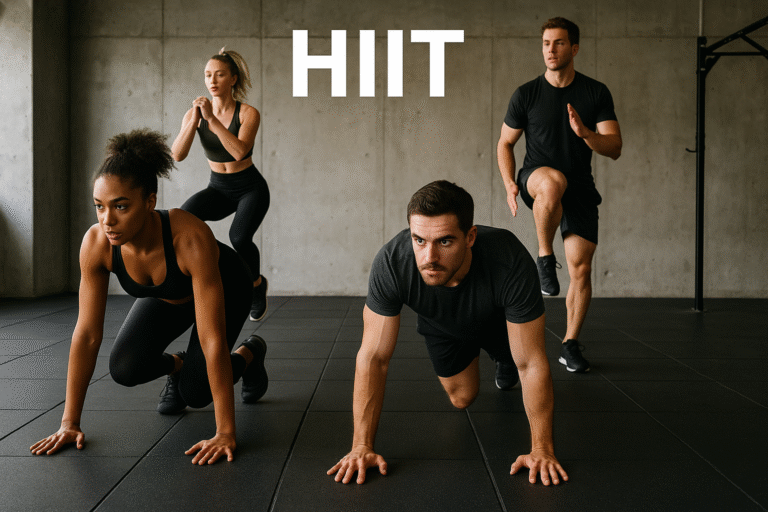
High-Intensity Workouts: The Double-Edged Sword of Fitness – How to Harness the Benefits While Avoiding the Pitfalls
New Delhi, July 15, 2025 – High-intensity interval training (HIIT) has taken the fitness world by storm, praised for its ability to torch calories, boost endurance, and improve metabolic health in record time. But recent research and expert insights reveal a catch: these punishing workouts can also spike stress hormones, increase injury risk, and even disrupt blood sugar levels in some individuals.
So, how can fitness enthusiasts strike the right balance? Here’s a deep dive into the science, benefits, and risks of HIIT—and how to optimize it for long-term success.
The Bright Side: Why HIIT Dominates Fitness Trends
1. Maximum Results, Minimum Time
In our fast-paced world, efficiency reigns supreme. Studies show that just 15-30 minutes of HIIT can burn as many calories as an hour of steady-state cardio, thanks to the “afterburn effect” (EPOC), where the body continues consuming oxygen—and burning fat—long after the workout ends.
2. A Heart Health Powerhouse
HIIT isn’t just for weight loss. Research in the Journal of the American Heart Association found that short bursts of intense exercise improve VO₂ max(a key marker of cardiovascular fitness) more effectively than moderate workouts, reducing risks of heart disease and hypertension.
3. Blood Sugar Regulation (Long-Term)
While HIIT can cause temporary blood sugar spikes due to adrenaline surges, consistent training enhances insulin sensitivity. A 2024 Diabetes Care study noted that three HIIT sessions per week lowered HbA1c levels in prediabetic patients by up to 12% over six months.
The Dark Side: Hidden Risks of Overdoing HIIT
1. Cortisol Overload
The same intensity that makes HIIT effective can backfire. “Frequent high-intensity sessions flood the body with cortisol, the stress hormone, which may lead to fatigue, weight plateaus, or burnout,” warns Dr. Emily Carter, a sports physiologist at the National Institute of Fitness.
2. Injury Epidemic
Data from the American Council on Exercise (ACE) reveals that HIIT-related injuries (e.g., ACL tears, lower back strain) have risen by 30% since 2020, often due to poor form under fatigue or inadequate recovery.
3. Blood Sugar Roller Coasters
For those monitoring glucose, HIIT can trigger sharp spikes followed by crashes. “The liver dumps glucose during exertion, which may concern diabetics,” says endocrinologist Dr. Raj Patel. “Monitoring and adjusting intensity is key.”
Striking the Balance: Expert-Backed Strategies
1. The 3:1 Rule
For every three days of HIIT, take one full recovery day or swap to low-impact activities like swimming or yoga, advises the American College of Sports Medicine (ACSM).
2. Hybrid Training Combine HIIT with
Strength training (2x/week) to protect joints and muscle mass. Zone 2 cardio (e.g., brisk walking) to enhance endurance without strain.
3. Smart Nutrition
Post-workout, pair 20-30g of protein (e.g., Greek yogurt, whey) with complex carbs (oats, sweet potato) to stabilize blood sugar and speed recovery.
4. Tech to the Rescue
Wearables like continuous glucose monitors (CGMs) or heart rate straps can help users track real-time responses and adjust intensity.
The Bottom Line
“HIIT is a tool, not a religion,” emphasizes celebrity trainer and physiotherapist Kelly Simmons. “For sustainable results, listen to your body—sometimes less is more.”
Pro Tip
New to HIIT? Start with 1-2 sessions weekly, focusing on form, and gradually increase as your fitness improves.